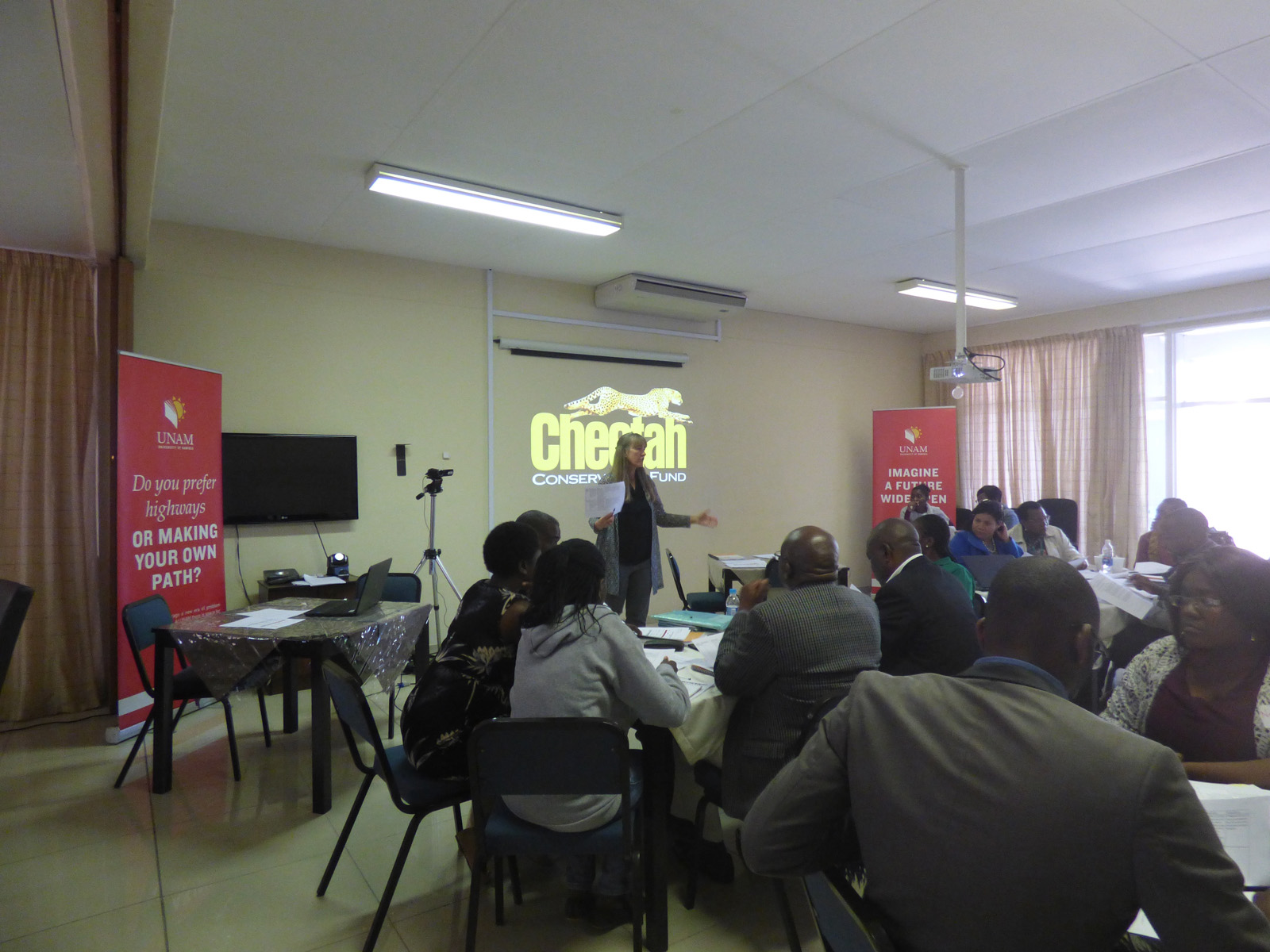Updated Teacher's Resource Guide
Educator Faculty testing out the latest version of the Teacher's Resource Guide
Since our last update I have had my head down working on a new project. I am excited to announce that I am nearly done with a new edition to CCF’s Teacher Resource Guide, Cheetahs: A predator’s Role in the Ecosystem. The project came about because of a visiting educator on sabbatical at CCF - Donna Rainboth – who first came to CCF in January 2016 and assisted me in the education department for five months. Donna is a teacher from Eastern Oregon University working in the education department specializing in teacher training in inquiry and STEM methods. Donna’s goal for her five month would be to help me to develop a teacher training program at CCF using CCF’s teacher resource guide (3rd edition).
Learning Needs Quickly
At the outset of the project we discovered through surveys and our own research that in the current edition of the guide many local educators were having trouble implementing it due to poor editing and the content was intended for Namibian educators but written by Americans that were not in Namibia. Namibia had recently updated their national learning standards or syllabus and we both knew that in order to effectively implement teacher training in Namibia we needed to align CCF’s teacher resource guide to the new National Namibian Syllabus. Well, this decision this took us down a deep rabbit hole so to speak which necessitated a fix of a lot of the content and addition of many new lessons and concepts.
I am very proud of what we have managed to produce in only six months’ time. We have made the CCF teacher’s resource guide more reflective of CCF’s varied conservation efforts and better conveys a predator’s role in the ecosystem in a hands-on and engaging form of education. We had a lot of help and support from fellow CCF staff members to make sure the content was factual and science based. Of course my wonderful husband, Bobby, helped me with graphics and we got to try out all of the new material on interns and teachers whose comments and suggestions made our changes to the resource guide worth while and relevant to the Namibian education system.
Feedback from Local Educators
In early June Donna and I went to meet with the Deputy Director of Academic Affairs and Research, Christa Alexander, from the University of Namibia (UNAM) to discuss the possibility of providing education students with a workshop focused on the newly revised CCF teacher resource guide. After some discussion, Ms. Alexander asked if the workshop could be designed instead for the education faculty with students invited to attend as well as a recent surge in the number of primary education students enrolled at UNAM created a need to hire many additional faculty members. The Academic Affairs and Research committee wanted to provide the faculty with strategies and ideas for active teaching methods that would engage the education students and that could be used as models for teaching learners in primary classrooms.
We planned and implemented a 4.5-hour workshop at the UNAM Khomasdal Campus in Windhoek in which 25 faculty members and 5 students attended the optional workshop and engaged in lessons from the revised Cheetahs, A Predators Role in the Ecosystem (4th Edition). The lessons were used to showcase the new guide, provide examples of research conducted at CCF and model best teaching practices. Participants in the workshop explored the concept of adaptations and metaphors using the lesson “Cheetahs, Built for Speed”. They looked at camera trap photos and identified wildlife seen on camera traps located throughout Southern Africa from “Camera Traps” lesson and they identified photos of hair samples found in scat to determine what cheetahs were eating from “Whose Hair Is It?” lesson. Math, language arts and visual arts topics were integrated in the science lessons as well. Engagement in the lessons was followed by in depth discussions of the teaching methods modeled, the pros and cons of student-centered teaching as compared to teacher-centered, materials required for the lessons, alignment to the National Namibian Syllabus and addressing the language barriers of 4th – 7th grade learners in Namibian classrooms.
The day provided good feedback on the lessons showcased and ideas for how to add to the interdisciplinary coverage to the resource guide. We have already been asked to come back to lead another workshop in September for faculty that missed out and students that will be back in session. UNAM School of Education has also agreed to use our guide and train their teacher how to use the content in their classrooms across Namibia.
The revised teacher resource guide is planned to be completed by the end of July, all fingers crossed. We will be submitting a copy of the resource guide to the Namibian Institute of Educational Development (NIED) for review. If they approve the content and its alignment to the National Namibian Syllabus, then they will train in the guide’s use and distribute to all of the schools across Namibia.
Unveiling in Johannesburg
Finally, this October I will be presenting about our revised resource guide and the process of aligning it to the National Namibian Syllabus at this year’s Environmental Educators Association of Southern Africa (EEASA) conference in South Africa. My hope is to get this new resource guide in the hands of environmental educators all across southern Africa. Hopefully, once the resource guide is finally finished we’ll continue updates about all the other activity that’s been going in during a very busy last six months!




